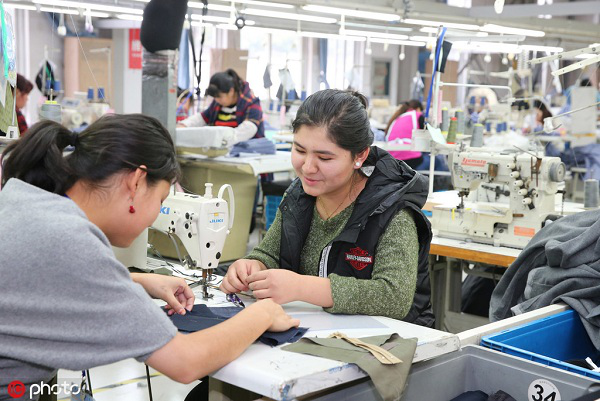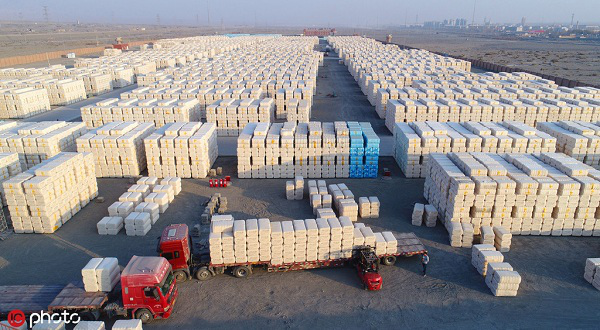Textile industry
The State Council, China's Cabinet, has launched various policies to boost the textile industry in Xinjiang and has been planning to transform the region into a major textile base with investment, financial aid and subsidies since 2015.
As a major cotton base with low labor costs, Xinjiang is regarded as the ideal site to build a textile industry center as enterprises in eastern China are seeking better locations for their labor-intensive factories. Apparel firms from outside Xinjiang have invested more than 30 billion yuan ($2.3 billion) in establishing plants and cooperating with local clothes makers.

Workers at a local textile enterprise in Xinjiang. [Photo/IC]
Xinjiang has made efforts to nurture local companies and attract more capital from other fields. It expects the output of the textile and garment sectors to reach 212.5 billion yuan in 2023, enabling it to provide jobs for about 1 million people.
In fact, the blossoming of the textile and garment industries is only a small part of Xinjiang's development and the preferential policies mentioned above are just part of the central government's efforts to make the region prosper.

Cotton products in a local factory in Xinjiang. [Photo/IC]
China has attached great significance to prosperity and stability in the area ever since the Xinjiang Uygur autonomous region was founded in 1955. The central government has pumped 1.69 trillion yuan into developing the region over the last 60 years, according to an official white paper released ahead of the anniversary.
Thanks to such massive support, the GDP of Xinjiang in 2014 amounted to 927.3 billion yuan, a 115-fold increase from 1955. Xinjiang has maintained double-digit growth over the past five years.

Cotton is a local specialty of Xinjiang. [Photo/IC]
To ensure people of all ethnic groups benefit from the development, the government has since 2011 built over 1.3 million homes for farmers and herdsmen, helped more than 2.5 million people find jobs, provided clean water for 4.2 million residents, subsidized high school education and expanded pensions and basic healthcare in the region.